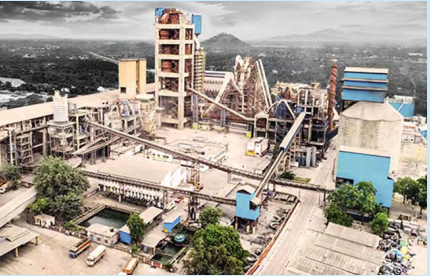Want to Subscribe?
Read Corporate India and add to your Business Intelligence

![]() Unlock Unlimited Access
Unlock Unlimited Access

Published: June 30, 2023
Updated: June 30, 2023
Udaipur Cement Works (UCWL) is a 72.54% subsidiary of JK Lakshmi Cement (JKLC), which is its flagship company and a part of the JK organisation.
The company has fared well in terms of revenue from operations, which has gone up to Rs 1,031 crore in FY23 over Rs 876 crore in the previous year. Interestingly, in the fourth quarter (Jan-Mar 2023), it has reported a net profit of Rs 16.89 crore vis-à-vis the combined PAT of Rs 18.97 crore for the previous three quarters (Apr-Dec 2023). On an equity capital of Rs 124.56 crore, the EPS translated to Rs 1.15 against Rs 1.56 in FY22 on a face value of Rs 4 per share. The book value is Rs 11.10 and the company has a long-term debt of Rs 1,016 crore vis-à-vis Rs 535 crore in the previous year.
The net sales during the year under review increased by 18%, while sales volume also increased by 4% to 20.35 lakh tonnes against 19.49 lakh tonnes in the previous year. The clinker capacity utilization for the whole year has been at 97%, whereas during the fourth quarter it went over 100%. Similarly, the share of renewable energy in the total power consumption increased from 46% (FY22) to 48% during FY23. UCWL has created a renewable energy portfolio of more than 21 MW, which is equal to its contract demand.
During the last quarter of the year, the company has successfully commissioned a floating solar power plant of 1 MW, which is the first of its kind in Rajasthan and the only one in the entire Indian cement industry.
Commenting on the results of the company, the Chairperson, Mrs Vinita Singhania, said, “Despite considerable pressure on margins on account of an unabated increase in fuel cost, the company has been able to record a satisfactory performance by improving its various efficiency parameters supported with a better product and geo mix.”

UCWL is currently implementing an expansion project with a clinker and cement making capacity of 1.5 mn tpa and 2.5 mn tpa respectively at an estimated cost of Rs 1,650 crore. The company has spent Rs 850 crore till FY23 and expects the commissioning over the next few quarters. It has significant proven reserves at its operational limestone mines in Rajasthan to meet its incremental requirement for brownfield expansion. In addition, parent organization JKLC already has new limestone mines in Rajasthan and Gujarat, which are yet to start operations.
To part-finance its brownfield expansion, UCWL has come out with a rights issue of up to 24,91,27,853 equity shares of Rs 4 each for cash at Rs 18 per share (including a premium of Rs 14) aggregating to Rs 448.43 crore, assuming full subscription in the ratio of four shares for every five shares held.
After the completion of its ongoing expansion project, UCWL’s clinker capacity will stand enhanced to 3 mn tpa and cement grinding capacity at 4.7 mn tpa. The company sells its cements under the ‘Platinum Heavy Duty’ and ‘Platinum Supremo’ brands.
It is worth mentioning that JKLC has become quite ambitious and aggressive in ramping up its cement manufacturing capacities and has recently announced that it is opting for the organic and inorganic route. With its current expansion, JKLC will reach a combined capacity of 18 mn tpa at the end of FY24 and plans to reach 30 mn tpa by 2030, for which it plans to invest about Rs 8,000 crore over a period of six years. In this regard, it has embarked on land acquisitions for greenfield opportunities at Nagaur in Rajasthan for the north India market and Kutch in Gujarat for the west India market. It has also recently entered east-central Uttar Pradesh in a bid to expand its presence in central India. Finally, by 2030, the company hopes to be among the top 10 cement makers in India.
According to Arun Shukla, President and Director, JKLC, “Cement demand is expected to improve by 7-8 per cent in FY24 following the Centre’s push towards infra and a boom in housing and construction activities. The price is expected to move in tandem with demand.”
It is estimated that nearly 62-65 per cent of cement demand is generated from the housing sector, followed by 20-25 per cent from infra and the rest from the industrial and commercial segments.

February 15, 2025 - First Issue

Industry Review

Want to Subscribe?
Read Corporate India and add to your Business Intelligence

![]() Unlock Unlimited Access
Unlock Unlimited Access
Lighter Vein

Popular Stories
Archives
